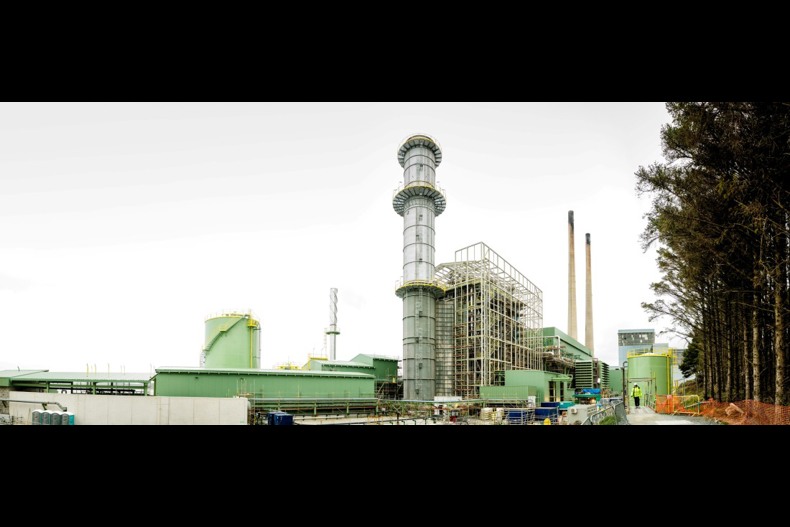
Managing Generation assets according to long-standing principles SSE’s primary objective for its Generation division is to maintain a diverse generation portfolio, including the largest amount of renewable energy capacity in the UK and Ireland, that helps keep the lights on by being available, reliable and flexible.
The Single Electricity Market (SEM) in Ireland faces similar market drivers to Great Britain but has a very different regulatory regime, including:
- centrally dispatched generation;
- a capacity mechanism that remunerates generators for a proportion of their fixed costs when plant is made available; and
- no support for offshore wind electricity generation.
In the Republic of Ireland (ROI) renewable generation receives policy support through the Renewable Energy Feed in Tariff. Policy support for renewable generation in Northern Ireland is delivered through the Renewables Obligation, the same as in Great Britain.
SSE is keen to maintain an effective balance between the electricity required to meet the demands of its growing customer base in Ireland and the electricity it produces from its own generation assets on the island. It is now the third largest electricity generation capacity owner in Ireland with around 13% of installed capacity.
Maintaining effective operational performance
At 31 March 2014, SSE owned 544MW of onshore wind farm capacity in Ireland (including 88MW in Northern Ireland) and 1,068MW of thermal generation capacity. The thermal assets are at four sites and their principal function is to help maintain security of electricity supply by being available to respond to peaks in demand. Output during 2013/14 was:
- 25GWh from thermal capacity; and
- 1,350GWh from renewable capacity.
Investing in new capacity for generating electricity at Great Island
Construction at the 460MW CCGT site at Great Island, Co. Wexford is well advanced and the plant is expected to generate its first energy in the next few weeks and be commissioned in the second half of 2014, at which time the existing 240MW fuel oil unit at the site will be decommissioned. Two major milestones reached by 31 March included the completion of the gas transmission connection and the 220kV electricity connection to the site. The Great Island gas connection has also provided a very positive local economic story, since the South-East of Ireland was previously unconnected to the gas network.
The Single Electricity Market (SEM) in Ireland has an effective capacity mechanism in place. This mechanism was an important factor in SSE’s decision to progress with the Great Island development and means it has been able to proceed with investment in new thermal electricity generation plant in the Irish market, which is in contrast to the position in respect of the Great Britain market.
The SEM itself is expected to be subject to important changes designed to implement the EU ‘target Model’ in electricity, about which consultations have begun. These consultations have looked at a wide range of issues and are expected to lead to wide-ranging SEM redesign, although the principles and objectives of such redesign, beyond compliance with the EU ‘target model’ have yet to be confirmed.
This is likely to result in the biggest change to the SEM since it was created in 2007 and SSE is working to ensure that changes safeguard supplies of electricity at a price that is affordable to customers, while supporting continuing investment in electricity in Ireland.
Developing new capacity for renewable energy in the all Island market
In the period to March 2014, both Athea (34MW) in Co. Limerick, and Glenconway (46MW), part of SSE’s Slieve Kirk Wind Park strategic area located in Co. Derry-Londonderry, came into operation. Output from Athea qualifies for the ReFiT support mechanism in ROI while output from Glenconway will receive ROCs.
SSE is continuing to add to its onshore wind farm development portfolio in Ireland and at 31 March 2014 it comprised around:
- 116MW in construction or pre-construction; and
- 56MW with consent for development.
The largest pre-construction project is the consented 170MW (SSE share 112MW) Galway Wind Park development, where pre-construction ground works are currently taking place. Subject to a final investment decision, it is expected to enter construction towards the later part of 2014. SSE also has around 100MW of other development projects currently in planning across Ireland.
Meeting customers’ future requirements for electricity in Ireland
Over the medium and long term, the completion of the 460MW CCGT at Great Island and the continuing development of its wind farm projects will give SSE a more balanced generation portfolio in Ireland and significantly increased output of electricity with a lower CO2 intensity than the SEM average. In a typical year, the Great Island CCGT and SSE’s wind farms are expected to generate the equivalent of around two thirds of the electricity needed to supply SSE’s current customers in Ireland. Along with its power purchase agreements, this means SSE can securely and cost-effectively meet the demand of its Irish supply business, SSE Airtricity, in a way that is sustainable.

